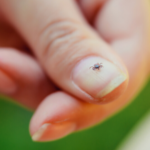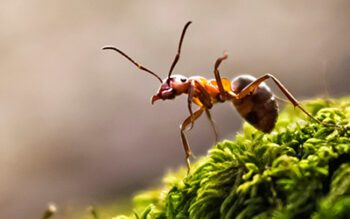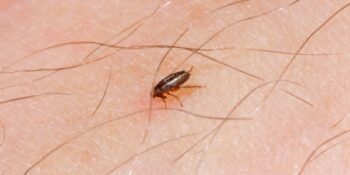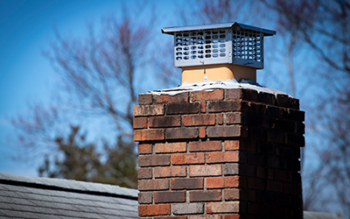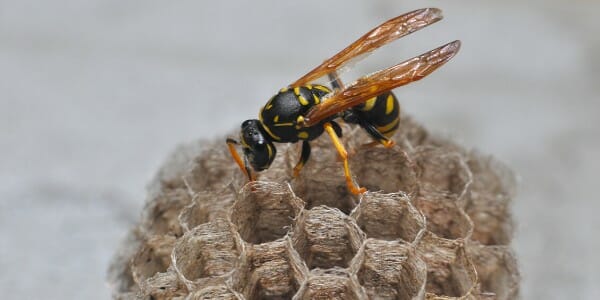
Stinging insects like wasps, yellow jackets, hornets and bees send more than 500,000 people to the emergency room each year. They become more active as their hives grow over the summer. Unlike bees, wasps, yellow jackets and hornets can inflict multiple stings. Nests are found very close to your home because it offers protection. Wasps especially try to protect their nests as much as possible, which is why they’re usually seen as the angriest stinging insect. Keep yourself and your family members away from any stinging insect nest found on your property. Do not attempt to remove it on your own. Some nests can contain hundreds (if not thousands) of stinging insects. These insects could swarm and sting when disturbed or threatened. Instead, contact Suburban Exterminating, a licensed pest professional who will be able to identify the species and help in stinging insect control by either destroying the colony or removing it to a safe location. Suburban Exterminating can help you to remove these stinging pests. Give us a call at (631) 864-6900 or (516) 864-6900
Below are the basic facts against protecting yourself against insect stings. Thanks to the Center for Disease Control (CDC) for supplying this information.
While you can’t avoid these insects completely, you can do some things to avoid being stung. After all, not everyone owns a bee suit!
Ten Ways to Avoid Wasp Stings
- Wear shoes.
- Over seed your lawn.
- Paint or stain untreated wood.
- Keep your garbage cans covered.
- Don’t swat away the bugs – they’ll get angry!
- Avoid sweet-scented perfumes.
- Make sure your window screens are intact – no holes!
- Treat stings right away!
- Do not remove a nest on your own. It’s a delicate process. See tip #10.
- Contact Long Island experts at Suburban Exterminating. Call (631) 864-6900 or (516) 864-6900.
What happens if you’re attacked by stinging insects?
If you are attacked by several stinging insects at once:
- Run to get away from them. (Bees release a chemical when they sting, which may attract other bees.)
- Go indoors.
- A shaded area is better than an open area to get away from the insects.
- If you are able to physically move out of the area, do not to attempt to jump into water. Some insects (particularly Africanized Honey Bees) are known to hover above the water, continuing to sting once you surface for air.
Insect Stings and Allergic Reactions
US News reported that over half a million people go to the emergency room each year because of insect bites. It’s not usually a problem (rather an annoyance) unless the individual is allergic to stings.
People who are allergic should consider getting the allergy shot. This shot works like a vaccine, building up a tolerance. They should also avoid all stinging insects, including bumblebees.
Symptoms of an allergic reaction include:
- hives (itching/swelling)
- tightness of the chest and throat
- swelling in the face
- dizziness
Though people with known allergies should obviously be more cautious, it’s important that everyone avoid stinging pests. It’s possible to develop allergies at any point in time.
If stung:
- Remove the stinger with a straight object (the FDA suggests a credit card because tweezers may cause more venom to excrete from the stinger).
- Clean the area with soap and water to avoid infection.
- Applying ice will help the swelling.
- Seek medical attention if the area becomes infected. Someone who’s infected will develop a fever and the redness/soreness will worsen.
- The BEST way to avoid getting stung is to remove the pest! Call Suburban Exterminating to remove bees and wasps (516) 864-6900 or (631) 864-6900

